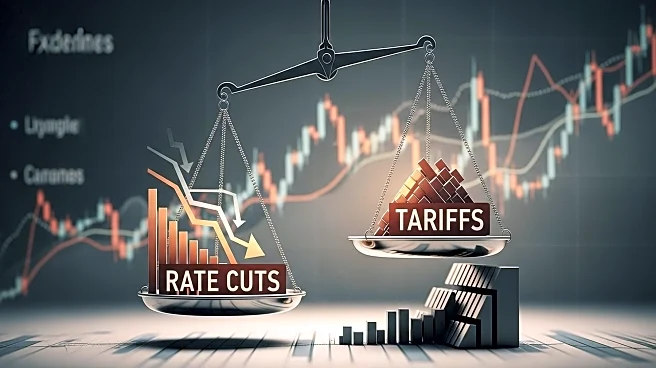What's Happening?
Federal Reserve Chair Jerome Powell recently stated that equities are 'fairly highly valued,' echoing similar warnings from past Fed Chairs such as Alan Greenspan, Ben Bernanke, and Janet Yellen. Despite these warnings, historical data shows that the stock market often continues to rise. For instance, the S&P 500 returned 8.5% to investors six months after such warnings and nearly 13% in the year following. Notably, the S&P 500 saw a return of 27.2% one year after Greenspan's famous 'irrational exuberance' warning in December 1996. Powell's comments come amidst varying macroeconomic conditions, often during periods of accommodative monetary policy. The Fed had lowered its benchmark rate shortly before Powell's latest remarks. While some investors draw parallels between current market conditions and the dot-com bubble of the late 1990s, JPMorgan strategist Fabio Bassi notes significant differences, highlighting strong organic growth and solid sales in current growth stocks.
Why It's Important?
Powell's warning about high stock valuations is significant as it highlights potential risks in the market, yet historical trends suggest that such warnings do not necessarily lead to market downturns. The resilience of the stock market, even after warnings from Fed Chairs, indicates investor confidence and the influence of monetary policy. The ongoing strength in growth stocks, particularly those driven by artificial intelligence, suggests a robust market environment. However, the sustainability of these trends remains in question, with traders expressing concerns over the circular nature of the AI industry. The market's ability to absorb these warnings and continue its upward trajectory could impact investor strategies and economic forecasts.
What's Next?
Investors and market analysts will likely continue to monitor the Federal Reserve's monetary policy decisions and their impact on stock valuations. The potential for further rate adjustments could influence market dynamics, particularly in sectors heavily reliant on growth stocks. Additionally, the ongoing debate over the sustainability of the AI-driven market rally may lead to increased scrutiny and strategic shifts among investors. As the market navigates these challenges, stakeholders will be watching for signs of volatility or stability in response to economic indicators and policy changes.
Beyond the Headlines
The warnings from Powell and previous Fed Chairs raise questions about the ethical and strategic considerations of market valuations. The comparison to the dot-com bubble highlights the importance of fundamental support in driving stock prices. The current environment, characterized by strong sales and shareholder returns, suggests a more stable foundation than past speculative bubbles. However, the reliance on AI and tech-driven growth introduces new variables that could reshape market dynamics and investor behavior in the long term.












